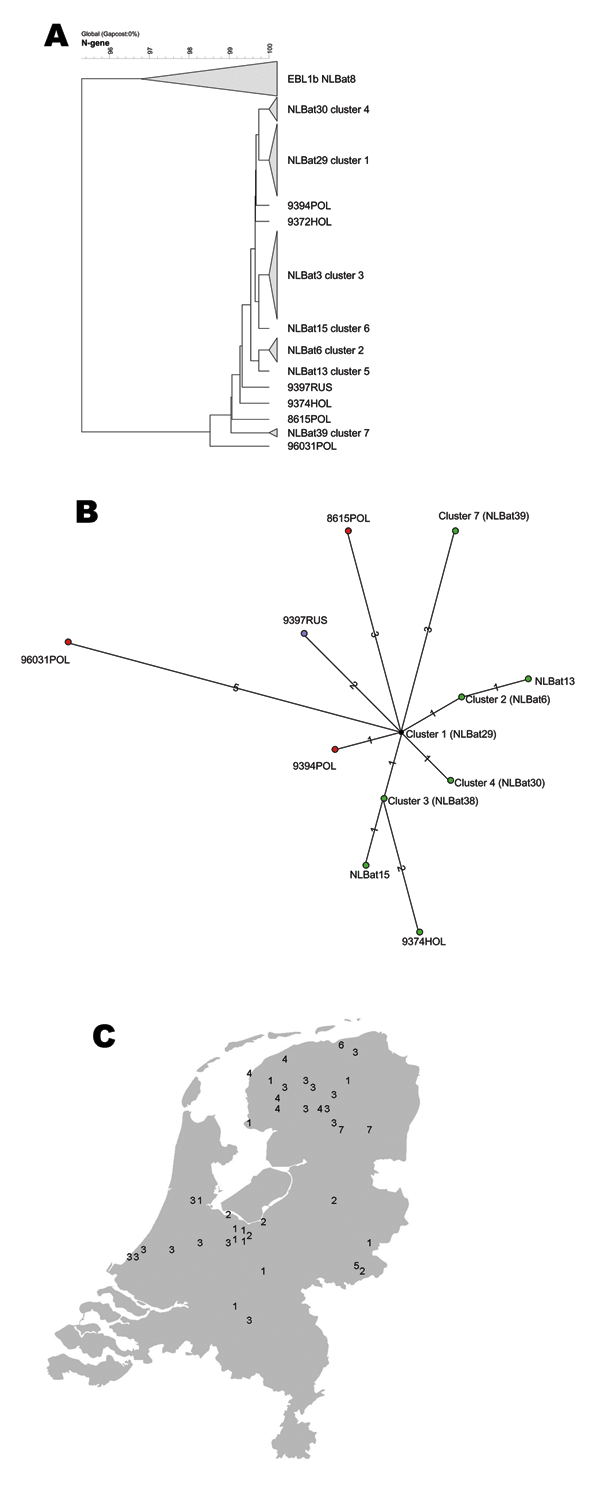Volume 11, Number 12—December 2005
Research
European Bat Lyssaviruses, the Netherlands
Figure 3

Figure 3. A) Phylogenetic tree of European bat lyssavirus 1 (EBLV1) sequences detected in serotine bats in the Netherlands, 1997–2003, and some historic sequences detected in bats in Europe. Analysis performed with maximum parsimony of representative DNA sequences of different EBLV1 sequences. B) Relationships between 7 different serotine bat EBLV1a sequence lineages (numbered "clusters" 1 to 7): maximum parsimony unrooted tree of representative EBLV1 sequences detected in serotine bats in the Netherlands and several historic sequences detected in other European countries (color coded country). C) Geographic distribution of the 7 different serotine bat EBLV1 lineages (numbered "clusters" 1 to 7) from 41 recently detected serotine bat isolates in the Netherlands.